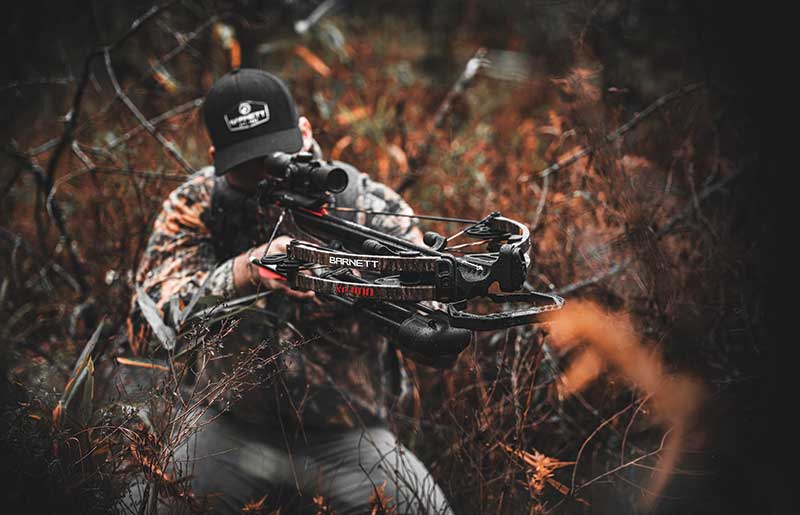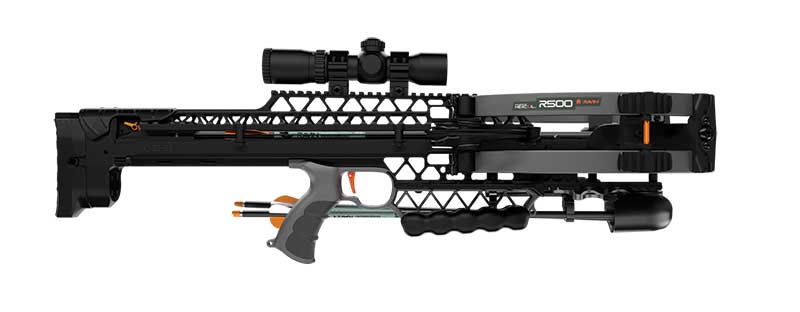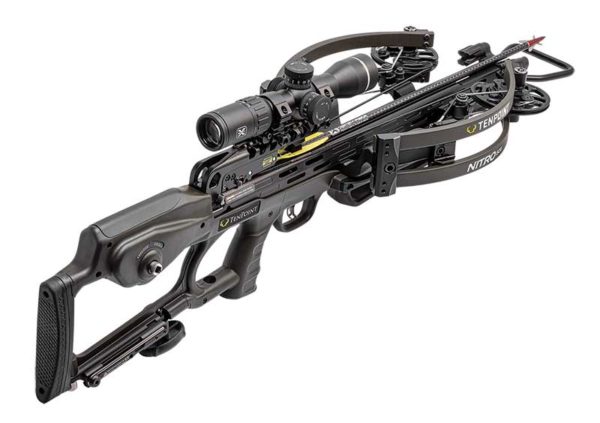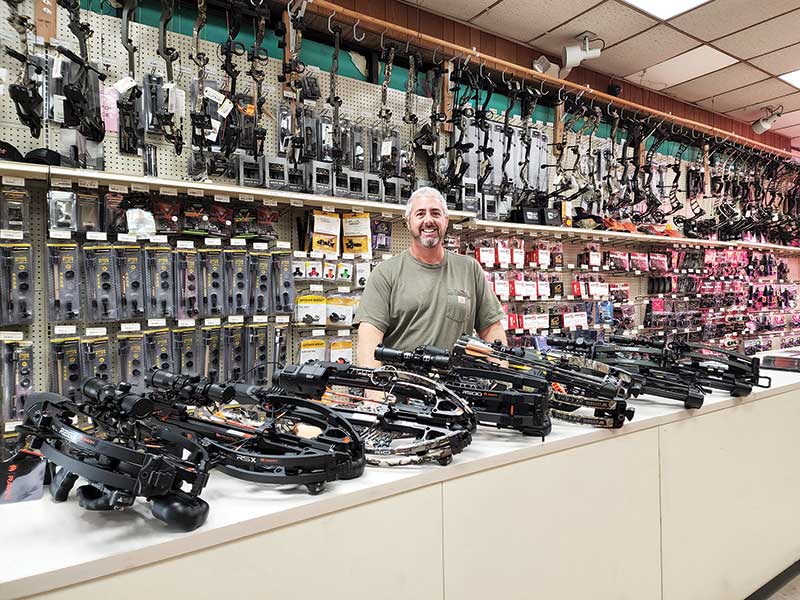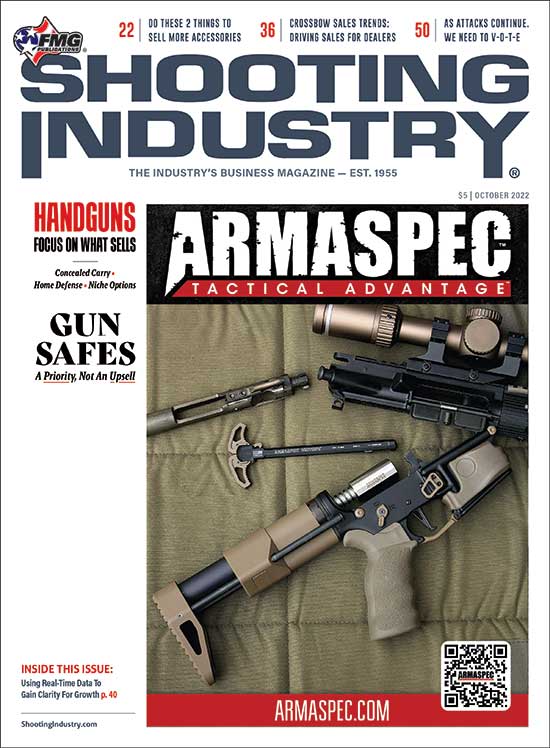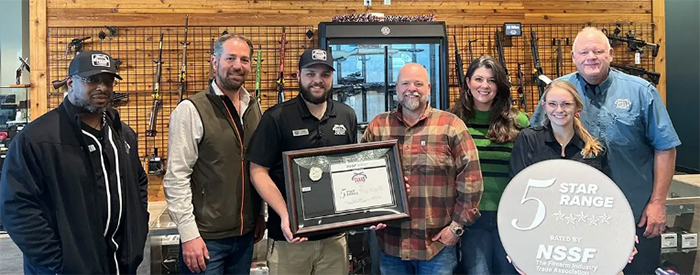The Crossbow Market
Participation in crossbow hunting continues to grow across the country. According to the Congressional Sportsmen’s Foundation, 28 states now allow unrestricted crossbow hunting throughout their big-game seasons. Several other states offer crossbow hunting opportunities during limited seasons and for hunters with disabilities.
According to the National Deer Association, deer hunters in the United States took approximately 6.3 million whitetails during the 2020–2021 hunting seasons. Hunters using archery equipment (vertical bows and crossbows) harvested 26% of all deer taken during this time period. In at least 11 states, hunters using crossbows harvested more deer than hunters with vertical bows.
“Hunting with crossbows is being embraced by traditional gun hunters looking to explore archery and maximize their time in the field.”
Hunting with crossbows is being embraced by traditional gun hunters looking to explore archery and maximize their time in the field. It’s also an incredibly effective — and popular — way to control deer populations in urban and suburban settings.
As crossbow hunting continues to attract gun hunters, the sport opens new sales opportunities for firearms retailers.
Exactly who are these gun hunters exploring crossbow hunting? Do their gear preferences differ from traditional crossbow customers? Which crossbows and accessories are selling best? What does the future hold for crossbow sales? Will there be increasing opportunities with youth and minority customers?
To get answers to these questions and more, we spoke with John Hess, president of Farmstead Outdoors in Sheboygan, Wis.; David Wilkins, owner of Wyvern Creations LLC in Lee, N.H.; Brent Gaston at Bridgeport Equipment & Tool in Ohio and W.Va.; and Jeremy Hicks, sales and service manager, and Jody Morphew, assistant/personal manager, at Archer’s Advantage in North Little Rock, Ark. Here are the personal experiences and insights they shared.
SI: How popular are crossbows these days?
Gaston: They are very popular. Now that crossbow hunting is legal in most eastern states, they are more popular than ever.
Hess: Extremely popular.
Hicks: With Arkansas being one of the first states to allow crossbows, they have always been popular. Throughout the years, most of the older shooters have moved to crossbows, but we are now seeing a noticeable number of younger shooters switching from traditional compound shooting over to crossbows.
Wilkins: Depends on who you ask. All we sell is crossbows, so for us they’re extremely popular. If you speak to a bow shop that does not like crossbows, and carries very few or just the base models and won’t allow them to be shot in their range, and treats the consumer like he is taking the salesman away from selling a “real bow,” then they are not that popular. The reality is they are a very large percentage of all bows sold and it is not slowing down. We are an aging population of hunters and that will force more people to use a crossbow or sit in their living rooms and wait for gun season, especially as more states include crossbows in archery season. The issue will be what happens when we lose those aging hunters and they are not replaced by younger ones.
SI: Who is buying crossbows and what are they using them for?
Hess: Most of our crossbow customers are gun hunters using them for archery season.
Wilkins: Anyone who can no longer pull back a vertical bow, does not have time to shoot all summer to get and maintain proficiency and the guys drooling at these high-end/uber-fast products on the market. The next group is gun hunters; they are hunting deer. Though there is a segment doing long-range target shooting with these new high-speed bows, the reality is until the bow industry accepts crossbows as “bows” and does national, large-scale target tournaments — and the manufacturers produce target bows not hunting bows — you will not see much beyond it being a deer-hunting tool.
Gaston: Hunters of all backgrounds are buying crossbows. Most use them for hunting big game.
Hicks: It’s really a mix between the older generation of hunters and the new generation of hunters. Obviously, the larger number being the older generation and predominantly male, but with a growing number of female and youth shooters. The majority of our customers are using them for hunting.
SI: What about “crossover” customers? Dealers in past issues have talked about rifle/gun hunters getting involved in crossbows. Have you observed this trend, too?
Morphew: With Arkansas’ archery season starting in September and lasting until February, we do see some hunters who haven’t been able to tag their hit-list buck during gun seasons — or just hunters wanting to extend their season come in and buy crossbows.
Hess: The majority of crossbow sales are gun guys.
Gaston: We get tons of “crossover” customers. The ease of use of crossbows allows those who previously did not have the ability to use archery gear, or the time to become proficient with vertical bows, to be able to hunt during archery season. It allows them to spend considerably more time in the woods.
Wilkins: Yep. You can’t advertise a crossbow as “your next rifle” and not have that. Ravin was the first to actively market to gun owners. When they opened, their outside sales staff was all gun guys. My local Ravin rep’s main line was drum magazines for AR-15s. They advertised their bows as a “crossgun” and noted accuracy well past ethical hunting distances. It caused a lot of problems! It did, however, drive sales of crossbows well past what we thought were possible on those high price points. Even dealers who hated crossbows — and really hated the “100-yard accuracy” marketing — brought in every Ravin they could get their hands on and bit their lip and took the money. It’s primarily a factor as a state allows crossbows in archery season since gun hunters will try to get an extra deer or two and get out earlier. But real gun hunters put the bow away the moment they can use their gun, so it’s just another weapon they can use to an end.
SI: How do their (rifle/gun hunters) preferences/habits differ from traditional crossbow customers?
Hess: It is usually a one-time purchase.
Gaston: They tend to focus more on speed when buying a crossbow.
Wilkins: There are two big issues. One is teaching them it’s not a gun (despite the advertising) and that they need to be “archery hunters” and not take 150-yard neck shots at running deer to be successful. The other is optics. These guys are used to using a 20X Swarovski scope on their rifle and they want that same optic on their crossbow without understanding they won’t be shooting at 300 yards. At more like 30 yards, those scopes simply don’t work at “bow range” — so we have to deal with a re-education on what to expect and what the bow and scope actually does. There is, however, a growing population who are going from gun to bow simply because crossbow allows them to do it easily and they become vertical archers as a result.
Morphew: In Arkansas, rifle hunters prefer and build habits toward the long-range hunts and shorter seasons. Our crossbow hunters prefer and build habits toward the extended season.
SI: How do your sales of crossbows and accessories this year compare to last year?
Hicks: At this moment, it is a little early in the season to tell, but with our current sales, it seems to be on par with our past years.
Gaston: I would say they are pretty similar to last year’s sales, but our selling season for crossbows hasn’t fully taken off yet. I expect it to be about the same as last year.
Wilkins: We’re kind of all over the place. The last two years were not “normal” by any gauge, and I am finding that comparing numbers to them is throwing my projections all over the place. The current economic disaster we are dealing with threw another wrench in the works, so I’m going to tell you we are up in some areas, down in others, but overall, we are up at least slightly.
SI: What do you attribute the sales trend to?
Gaston: The overall ease of use of crossbows. Hunters want to spend more time in the woods and a crossbow allows them to do that.
Morphew: Aging population and busy urban lifestyle.
Wilkins: During the Dempanic, if it rolled, floated or went “BANG,” you could not keep it in stock. This year is trending more like a regular year during an economic turndown, but with any luck, November will start to turn things around.
“Hunters want to spend more time in the woods and a crossbow allows them to do that.”
SI: Which crossbows and related products are your customers buying most?
Wilkins: Cases, targets, more arrows — basically the same stuff they bought when they bought vertical bows, or if they are just starting out, what they need. A lot of them are upgrading the optics, which on many factory bows are just okay at best.
Hess: Ravin crossbows have dominated the crossbow sales.
Hicks: The majority of buyers are after what fits them economically, but we still do have customers who are after the best of the best. Most popular brands would be TenPoint, Wicked Ridge and Ravin.
Gaston: TenPoint, Ravin and Excalibur do very well as far as accessories go. Bolts tend to be our most sold item as most crossbows come with everything you need from the factory.
SI: Are you able to keep these products in stock? Have you experienced supply chain problems with these products?
Morphew: We definitely have experienced supply chain problems, and it has been a problem for a while. We recently saw a small increase in product availability, but certainly nothing like it was a year ago.
Wilkins: Somewhat … there are still issues with shipping delays. One issue, for example, is stocks. One manufacturer was out for months, finally got them in and they had a cracking issue. Turns out their supplier could not get the “good plastic,” so he subbed in some crappy plastic he could get. A lot of manufacturers have the same “can’t get help” issues, so they are backlogged on orders. Add in recession fears and worry about overextending on inventory and it will all cause problems. We won’t see this go away anytime soon.
Hess: This year has been good. I believe manufacturers have caught up due to lower sales.
Gaston: Last year, we had problems keeping crossbows and accessories in stock. So far this year, it seems to be getting better, although some products still have extended lead times.
SI: How important are crossbows and accessories to your overall business?
Hess: They’re okay. Compound customers still purchase three times more than any crossbow customer.
Wilkins: It’s what we do. It’s pretty much all we do, so it’s pretty important.
Gaston: They make up for a large portion of archery sales.
Hicks: It holds a good percentage and seems to be growing more and more every year.
SI: What advice would you give to dealers who are looking to stock crossbows for the first time or expand their current offering?
Hess: You have to have a full spectrum of bows. You need the entry-level price point to the “I have to have the best bow on the market.”
Morphew: Keep a variety of crossbow brands and crossbow products. Try not to focus on only low-end or just high-end products.
Gaston: You need to have the equipment and knowledge to be able to work on them.
Wilkins: If you feel crossbows are “not a bow” don’t waste your time, money or your customer’s time by selling crossbows. Gauge your customer base and treat crossbows like any other bow brand. You don’t bring in Hoyt and only stock their low-end bows or only a few models — you bring in the whole line. Same deal: These are a “bow line” and you either sell it or you don’t.
SI: What do you think the next few months will bring for crossbow sales?
Hess: We usually see heavy volume come September–October for the rut.
Hicks: A steady increase!
Wilkins: We are still waiting for product that was announced a year and a half ago, so hopefully we will see some new products shipping in soon. The “coming soon” deal has ticked off a lot of consumers and dealers alike. Hopefully it will change, and we can get back to seeing the new stuff in our hands at the ATA show and physically shipping by March next year rather than dealing with Photoshopped pictures of bows and accessories that we can’t get an accurate ship date on.
Gaston: I think they will be as good as they have ever been. Demand is high and with the supply starting to come back it should make for a good year.
SI: Do you foresee future growth opportunities with youth or minority customers?
Morphew: Yes, we’re already seeing a growth. A lot more youth are getting involved with crossbow products.
Hess: We do not see a lot of youth purchases. We already have a large minority customer base and do not see it getting larger in the future.
Gaston: Yes. As crossbows become smaller, it will allow more youth as well as handicapped hunters to use them with more ease.
Wilkins: We need a huge push to get mentors and hunter education and such into the schools so the kids who don’t have anyone taking them outside can find someone to help them.

